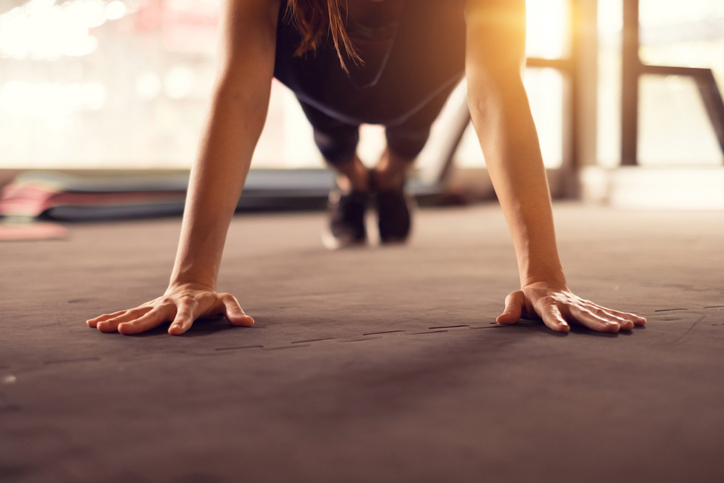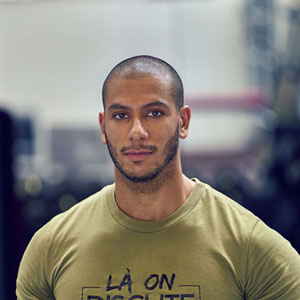Mon plan d’entraînement de musculation pour la rentrée
Et oui ! Nous voilà déjà à la rentrée de cette nouvelle saison 2020 - 2021. La saison précédente a été très particulière avec le confinement et la fermeture des salles de sport, peut-être que ces événements t’ont même emmenés à modifier tes habitudes sportives en testant d’autres activités ou même en intégrant plus de séances à la maison. En tout cas, une chose est sûre, nous ne sommes pas prêt d’oublier cette saison 2019 - 2020. Mais c’est maintenant du passé et notre prochaine mission va être de bien préparer cette nouvelle saison qui débute avec un plan d’entraînement spécial rentrée ! L’objectif ? Structurer un programme cohérent qui prendra en compte toutes les spécificités d’un plan d’entraînement efficace en musculation. Tu es prêt ? C’est parti !
La rentrée, c’est le moment idéal pour débuter un nouveau programme sur de bonnes bases. Des bases qui vont solidifier tes progrès sur le long terme et t’assurer de ne jamais régresser. C’est à cette période que tu vas pouvoir te fixer des objectifs sérieux et une routine en accord avec le but que tu t’es fixé. Et grâce à une programmation d’entraînement bien organisée, tu n’auras aucun mal à atteindre ces objectifs ambitieux.
Préparer l’ensemble du corps pour une meilleure progression
Pour mettre toutes les chances de ton côté, il faudra passer par ce qu’on appelle une PPG.
Dans la préparation sportive, c’est ce qu’on appelle une “Préparation Physique Générale”. Le but de ce cycle d’entraînement est de travailler de manière polyvalente sur plusieurs qualités physiques importantes pour la suite de ta programmation. Sans rentrer dans le jargon technique, il est toujours plus judicieux d’avoir une programme général en début de saison avant d’entrer dans quelque chose de plus spécifique. De cette façon, tu prépares le terrain pour exploser des records tout au long de l’année ! C’est beaucoup plus cohérent que de chercher à se spécialiser sur un programme force ou hypertrophie dès le 1er Septembre.
En plus, une PPG bien construite te permettra d’explorer des techniques d’entraînements que tu n’as peut-être pas l’habitude d’utiliser. Et ces techniques pourraient très bien te servir à te développer plus facilement pendant le reste de l’année.
La préparation physique générale pour la musculation
Concrètement, comment va se construire une PPG ? Alors déjà, garde bien en tête que la PPG peut être différente en fonction du sport pratiqué et de l’expérience du pratiquant. Un footballeur et un nageur ne passent pas par la même PPG. Même si on peut retrouver des similitudes, il y aura forcément des différences. Donc n’imagine pas qu’une PPG est un cycle d’entraînement générique applicable par n’importe quel sportif à n’importe quel moment.
Dans ce cycle, pour un pratiquant de musculation, le but va être de travailler certaines qualités physiques bien précises pour optimiser la progression des mois suivants. En priorité, nous allons donc travailler :
• La force
• La résistance
• L’endurance
• La coordination
Ces qualités se retrouvent forcément dans n’importe quel programme de musculation et il faudra donc les entraîner pour optimiser les résultats. Pour ça, nous allons évidemment utiliser des exercices de musculation “classique” couplés à une certaines organisation des variables d’entraînement. Il faudra donc que tu veilles à bien respecter tous les paramètres pour avoir une efficacité maximale. La bonne nouvelle, c’est que certains exercices travaillent plusieurs qualités physiques à la fois, ce qui va te permettre d’avoir des séances condensées et efficaces. Le SQUAT par exemple, en fonction des variables d’entraînement utilisées, peut effectivement travailler toutes les qualités physiques ! Et ça c’est une excellente nouvelle.
Programme d’entrainement pour une PPG musculation
Pour t’aider à y voir plus clair, voici un exemple de programme d’entraînement à suivre en salle. Tu trouveras ci-après deux séances Full Body différentes à réaliser en alternance. Tu peux tout à fait les répéter deux fois dans la semaine pour comptabiliser quatre séances au total. Pour bien récupérer, je te conseille de ne pas faire plus de cinq séances par semaine pendant cette période de PPG. Par contre, un minimum de trois séances dans la semaine est recommandé pour que ce programme spécial rentrée soit efficace.
Pour plus de lisibilité, j’ai séparé les exercices par “qualités physiques” pour que tu puisses identifier quels mouvements travaillent l’endurance et quels autres mouvements travaillent la coordination. Comme mentionné plus haut, beaucoup de ces exercices travaillent plusieurs qualités en même temps ! Donc même si je range le squat dans la catégorie force, tu sais qu’il va aussi travailler les autres qualités.
| Force | Résistance | Coordination | Endurance |
ATTENTION : Pour les exercices notés “FORCE”, ne pas aller à l’échec musculaire. Garder en réserve une ou deux répétitions.
Séance 1
| Exercice | Tempo | Séries | Réps | Récup |
| Squat | 2110 | 6 | 6 | 120" |
| Presse à cuisse | 3110 | 4 | 15 | 60" |
| Gainage bras tendus | 5x 1 min de gainage - 30 sec de récupération | |||
| Fentes alternées avec impulsions | rapide | 40 répétitions en TOUT | ||
| Corde à sauter | 5x 1 min d’effort - 30 sec de récupération | |||
| Mountain Climber | 80 répétitions en TOUT | |||
Séance 2
| Exercice | Tempo | Séries | Réps | Récup | |
| Rowing inversé | 2010 | 6 | 6 | 60" | |
| Pompes | 2110 | 50 répétitions en TOUT | |||
| Clean and press | rapide | 3 | 20 | 45" | |
| Split squat | 3110 | 3 | 15 | 60" | |
| Step up | 100 répétitions en TOUT | ||||
| Burpees | 80 répétitions en TOUT | ||||
Petit rappel sur les tempos
Ce nombre désigne la vitesse à laquelle tu vas effectuer chacune de tes répétitions.
Le premier chiffre est la durée en seconde de la phase excentrique
Le troisième chiffre est la durée de la phase concentrique
Les deuxième et quatrième chiffres représentent la durée des phases isométriques
Exemple, un développé couché effectué en tempo 2110 doit être réalisé de la façon suivante
• 2 secondes sur la descente
• 1 seconde d’arrêt en position basse (à quelques centimètres de la poitrine)
• 1 seconde sur la montée
• pas de temps d’arrêt en position haute
Combien de temps ce programme doit être suivi ?
La durée d’une PPG dépend de plusieurs facteurs, en l'occurrence la durée des cycles suivants mais aussi l’objectif que tu t’es fixé. Si nous partons du principe que tu cherches à atteindre ton premier objectif de cette saison mi-décembre, tu peux suivre une PPG pendant 3 à 4 semaines. Si au contraire tu as un objectif plus proche dans le temps (comme mi-novembre par exemple) alors la PPG peut être suivie sur 2 à 3 semaines. En règle générale, 2 à 3 semaines d’entraînements en PPG représentent une bonne base que tu peux faire évoluer en ajoutant une ou deux semaines en fonction de ton ressenti.
Avec ce programme, tu es prêt à attaquer la rentrée dans les meilleures conditions ! La saison 2020 - 2021 doit être une saison exceptionnelle, alors prends les dispositions nécessaires pour que ce soit le cas. Bon courage ;)
PARTAGER L'ARTICLE
 Offre spéciale : Les 4 premières semaines à 19€
Offre spéciale : Les 4 premières semaines à 19€




